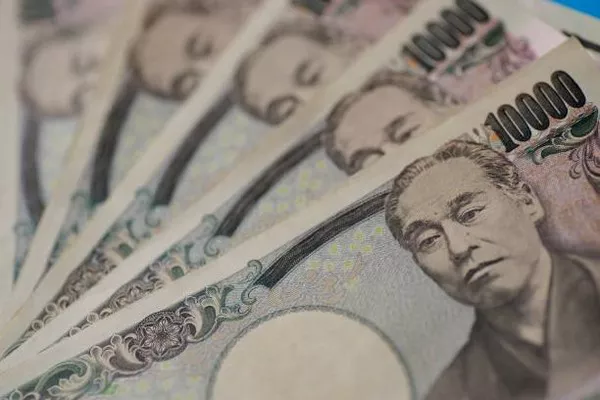In the realm of global currency, few denominations carry as much historical significance and cultural symbolism as the Japanese 50 yen note. Amidst the bustling streets of Tokyo, the serene landscapes of Kyoto, and the tranquil shores of Okinawa, this humble banknote serves not only as a medium of exchange but also as a tangible link to Japan’s rich heritage and enduring resilience. In this article, we delve into the intricate tapestry of history, tradition, and symbolism woven into the fabric of the Japanese 50 yen note, shedding light on its journey from conception to the present day.
The Genesis of the 50 Yen Note:
The inception of the 50 yen note can be traced back to the tumultuous period of post-war reconstruction in Japan. Following the devastation of World War II, the nation faced unprecedented challenges in rebuilding its economy and infrastructure. In this context, the Japanese government, under the auspices of the Ministry of Finance, embarked on a comprehensive monetary reform aimed at stabilizing the country’s financial system and restoring public confidence.
It was amidst this backdrop of reconstruction that the 50 yen note was introduced, making its debut in 1951. Crafted with meticulous attention to detail, the design of the banknote encapsulated the essence of Japan’s cultural heritage while embodying the principles of resilience and renewal. Adorned with intricate motifs and traditional elements, such as cherry blossoms and Mount Fuji, the 50 yen note quickly became a cherished symbol of national identity and unity.
The Cultural Symbolism of the 50 Yen Note:
Beyond its monetary value, the 50 yen note holds immense cultural significance within the fabric of Japanese society. Each element of its design serves as a poignant reminder of Japan’s storied past and enduring traditions.
At the heart of the banknote lies the iconic image of Noguchi Hideyo, a renowned bacteriologist whose pioneering work in the field of medicine earned him widespread acclaim. Noguchi’s inclusion on the 50 yen note pays homage to his contributions to humanity and serves as a testament to Japan’s commitment to innovation and scientific progress.
In addition to Noguchi’s portrait, the reverse side of the 50 yen note features a depiction of Chidorigafuchi, a scenic moat located near the Imperial Palace in Tokyo. Renowned for its breathtaking cherry blossoms, Chidorigafuchi embodies the ephemeral beauty of nature and serves as a poignant symbol of renewal and rebirth.
Furthermore, the design of the 50 yen note incorporates subtle references to Japanese folklore and mythology, such as the image of a phoenix rising from the ashes. This mythical creature, revered in Japanese culture as a symbol of immortality and regeneration, serves as a powerful metaphor for the nation’s ability to overcome adversity and emerge stronger than before.
The Evolution of the 50 Yen Note:
Over the decades, the design of the 50 yen note has undergone several revisions, reflecting the evolving cultural and aesthetic sensibilities of Japanese society. From subtle changes in color palette to the introduction of advanced security features, each iteration of the banknote has sought to strike a delicate balance between tradition and modernity.
One notable milestone in the evolution of the 50 yen note came in 2004, with the introduction of the “Series E” design. Inspired by the theme of “Japanese culture and its surroundings,” this redesign featured vibrant imagery showcasing Japan’s natural landscapes, historical landmarks, and artistic heritage. From the majestic snow-capped peaks of Mount Fuji to the serene beauty of traditional Japanese gardens, the Series E 50 yen note captured the essence of Japan’s cultural tapestry with unparalleled elegance and grace.
In addition to aesthetic enhancements, the Series E 50 yen note incorporated state-of-the-art security features to combat counterfeiting and ensure the integrity of Japan’s currency. Advanced techniques such as microprinting, holographic foils, and color-shifting inks were employed to safeguard the authenticity of the banknote, providing both merchants and consumers with peace of mind in an increasingly digital age.
Looking to the Future:
As we stand on the cusp of a new era defined by rapid technological advancement and global interconnectedness, the Japanese 50 yen note remains a steadfast symbol of tradition and resilience. In an age where cashless transactions and digital currencies dominate the financial landscape, the enduring presence of the 50 yen note serves as a poignant reminder of the value of tangible artifacts in preserving cultural heritage and fostering national identity.
As Japan continues to navigate the complexities of the modern world, the 50 yen note stands as a beacon of stability and continuity, anchoring the nation to its storied past while embracing the promise of a brighter future. Whether tucked away in the pockets of tourists exploring the streets of Kyoto or exchanged between friends over a cup of tea in Tokyo, the 50 yen note endures as a cherished symbol of Japan’s cultural legacy and unwavering spirit.


